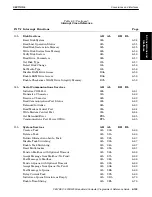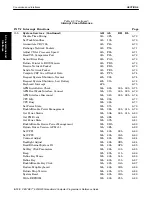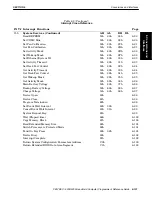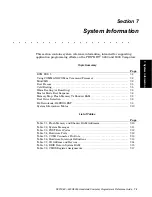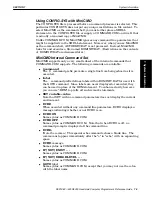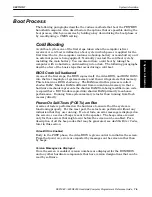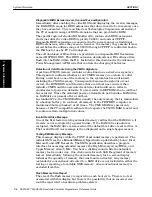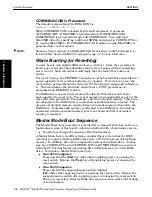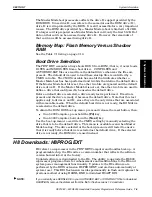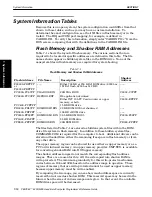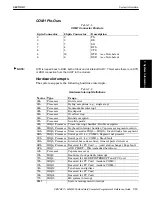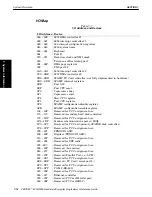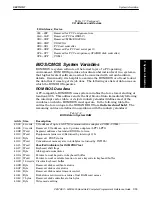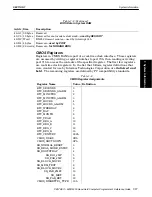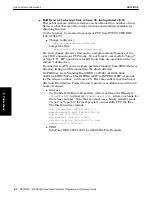
SECTION 7
System Information
7-6 PEN*KEY
R
6200/6300 Hand-Held Computer Programmer’s Reference Guide
Disposable BIOS Extensions are Scanned For and Executed
Immediately after enabling the video BIOS and displaying the version messages,
the ROM BIOS scans for BIOS extensions that do not need to be in memory once
they have executed. This is an Intermec Technologies Corporation extension of
the PC standard concept of BIOS extensions that are provided by ROM.
The specific region of shadow ROM allowed to contain such BIOS extensions
starts just after the video BIOS (typically C680:0) and ends at CFFF:F.
Disposable BIOS extensions are executed in the same manner as traditional
BIOS extensions. After they execute, however, the memory they execute from is
zeroed before the address range of C800:0 through CFFF:F is redirected back to
the ISA bus for use by PC Card adapters.
The soft download of H8 software is provided via a disposable BIOS extension
named H8PROG.EXT. This BIOS extension downloads new H8 software from
flash into the RAM within the H8. Included in this download is the Advanced
Power Management (APM) code that controls the charging of batteries.
Detection of Cold Boots Using the CMOS Signature
A portion of CMOS memory contains a value known as a
checksum signature
.
This signature indicates whether or not CMOS memory, as a whole, is valid.
During a cold boot, none of the memory in the system has been initialized,
including the CMOS memory. Consequently, because the signature is not
correct, the ROM BIOS can determine that a cold boot has occurred, then
initialize CMOS and the associated realĆtime clock hardware to reflect a
standard set of powerĆon defaults. It also records (in EEPROM) that a cold boot
has occurred. Since the standard powerĆon defaults do not include a RAM drive,
no RAM drive is present after a cold boot.
In standard PCs, the CMOS RAM is usually the only memory that is maintained
by a backup battery. In contrast, all memory in the PEN*KEY computer is
maintained (batteryĆbacked) at all times. The CMOS RAM is special only
because of the PCĆcompatible software that expects the CMOS RAM to exist and
to contain certain configuration values.
Invalid RamDrive Message
One of the first tests involving extended memory verifies that the RAM drive, if
it exists, is not corrupted by a power failure. If the RAM drive signature is
corrupted, the RAM drive is removed and the default boot drive is set to drive A.
The
Invalid RamDrive
message is then displayed and a single beep is issued.
Testing XMS Memory Message
This message displays while the POST of extended memory is performed. The
initials
XMS
see the e
X
tended
M
emory Specification published by Lotus, Intel,
Microsoft, and AST Research. The XMS specification describes a program
interface for accessing extended memory, the High Memory Area (HMA), and
Upper Memory Area (UMA). You hear a clicking sound while the extended
memory test is under way. One click occurs for each 64 KBĆsegment of memory
tested. Immediately following the extended memory test, a screen display
indicates the quantity of memory that was found and tested. Any memory
(extended or conventional) allocated to a RAM drive is not included in either the
testing or reporting of available XMS memory. Also conventional memory is
excluded from this.
Flash Memory Size Report
The size of the flash memory is reported on each boot cycle. There is no test
associated with this display, but there is the possibility that an incorrect size
could be reported if a hardware problem existed.
7. System Information




